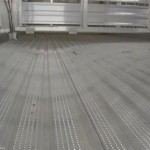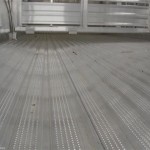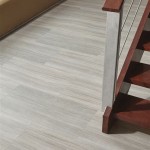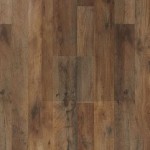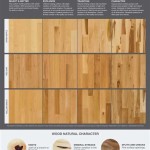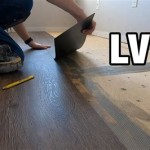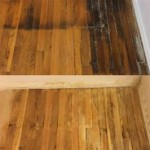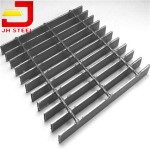Best Flooring Options Over Concrete Slab
Concrete slabs offer a durable and stable subfloor, commonly found in basements, ground-level homes, and increasingly, in upper floors of modern construction. While concrete itself can be finished and used as a flooring surface, it often lacks the aesthetic appeal, comfort, and thermal properties desired for living spaces. Selecting appropriate flooring materials to install over a concrete slab requires careful consideration of factors like moisture levels, aesthetics, durability, and budget.
This article will explore several of the best flooring options available for installation over concrete slabs, outlining their benefits, drawbacks, and installation considerations. Understanding these nuances will facilitate informed decision-making in achieving the desired look and functionality for any room with a concrete subfloor.
Addressing Moisture Concerns in Concrete Slabs
Moisture is a primary concern when installing any flooring over concrete. Concrete is porous and can wick moisture from the ground, especially in basements or improperly insulated slabs. Excess moisture can lead to mold growth, adhesive failure, and damage to the flooring material. Therefore, it is crucial to test the concrete slab for moisture content before proceeding with any installation.
Several methods exist for testing moisture levels. A calcium chloride test (also known as a moisture vapor emission test) measures the rate at which moisture evaporates from the concrete surface. This test involves placing a pre-weighed container of calcium chloride on the concrete, sealing it, and then weighing it again after a specific period. The weight gain indicates the amount of moisture emitted by the concrete.
Another method involves using an electronic moisture meter. These meters measure the electrical resistance of the concrete, which is correlated to moisture content. While electronic meters provide quick readings, they are generally less accurate than calcium chloride tests and should be used primarily for preliminary assessments.
If moisture levels are high, remediation is necessary before installing flooring. Options include applying a moisture barrier coating to the concrete surface, installing a subfloor system with built-in ventilation, or addressing the source of the moisture intrusion. Ignoring moisture issues can lead to costly problems down the line.
Popular and Effective Flooring Choices
Several flooring options are well-suited for installation over concrete slabs, each with its own advantages and disadvantages. These include, but are not limited to, engineered hardwood, laminate, luxury vinyl, tile, and carpet.
Engineered Hardwood: Offers the look and feel of solid hardwood, but with enhanced stability and moisture resistance. Engineered hardwood consists of a thin layer of real wood veneer bonded to a plywood or fiberboard core. This construction makes it less susceptible to warping and cupping than solid hardwood, especially when installed over concrete. It can be installed using various methods, including gluing, nailing, or floating. When gluing, it's essential to use an adhesive specifically formulated for concrete slabs.
Laminate: A cost-effective alternative to hardwood that mimics the appearance of wood, stone, or tile. Laminate flooring consists of a high-density fiberboard (HDF) core with a photographic layer and a protective wear layer. It is typically installed as a floating floor, meaning it is not directly attached to the concrete slab. A moisture barrier underlayment is essential to protect the laminate from moisture and provide cushioning.
Luxury Vinyl (LV): A versatile and durable option that comes in planks (LVP) or tiles (LVT). Luxury vinyl is highly water-resistant and can withstand heavy traffic, making it suitable for kitchens, bathrooms, and basements. It is available in a wide range of styles and colors, mimicking the look of hardwood, stone, or tile. LV can be installed using glue-down, click-lock, or loose-lay methods. The click-lock method is popular for DIY installations.
Tile: Includes ceramic, porcelain, and natural stone tiles. Tile is highly durable, water-resistant, and easy to clean, making it an excellent choice for high-moisture areas. However, tile can be cold and hard underfoot, so radiant floor heating is often installed underneath for added comfort. Tile is installed using thin-set mortar, which requires a smooth and level concrete surface.
Carpet: Provides warmth and comfort underfoot, making it a popular choice for bedrooms and living rooms. Carpet can be installed over concrete using various methods, including direct glue-down, stretch-in with tack strips, or using carpet tiles with adhesive backing. A moisture barrier underlayment is essential to protect the carpet from moisture and provide cushioning. Direct glue-down is often used in commercial settings or basements. Choose mold and mildew resistant carpet and padding for installations over concrete.
Installation Considerations and Best Practices
Proper installation is critical to the long-term performance and appearance of any flooring installed over concrete. Following the manufacturer's instructions and adhering to industry best practices will help ensure a successful installation.
Concrete Preparation: The concrete slab must be clean, level, and dry before installing any flooring. Remove any debris, dust, or existing coatings. Fill any cracks or holes with a concrete patching compound. Level the surface using a self-leveling compound if necessary. Ensure the slab is adequately cured, typically at least 28 days old, before installing flooring.
Underlayment: An underlayment provides a smooth, cushioned surface for the flooring and can also act as a moisture barrier. The type of underlayment required depends on the flooring material and the condition of the concrete slab. For laminate and engineered hardwood, a foam or cork underlayment is commonly used. For tile, a cement backer board is often used to provide a stable base.
Acclimation: Allow the flooring material to acclimate to the room's temperature and humidity for several days before installation. This will help prevent expansion and contraction issues after installation. Follow the manufacturer's recommendations for acclimation time.
Adhesives: When using adhesives, choose products specifically formulated for use with concrete and the flooring material. Apply the adhesive evenly and according to the manufacturer's instructions. Use the correct trowel notch size to ensure proper bonding.
Expansion Gaps: Leave expansion gaps around the perimeter of the room and around any vertical obstructions, such as pipes or columns. These gaps allow the flooring to expand and contract without buckling or cracking. Cover the expansion gaps with baseboards or trim.
Professional Installation: While some flooring options, such as click-lock luxury vinyl and carpet tiles, can be installed by experienced DIYers, other materials, such as tile and engineered hardwood, are best installed by professional flooring contractors. Professional installers have the knowledge, skills, and tools to ensure a proper and long-lasting installation.
Choosing the best flooring option for a concrete slab involves carefully weighing the pros and cons of each material, understanding the site-specific conditions, and following proper installation procedures. By considering these factors, homeowners can achieve beautiful and durable floors that enhance the comfort and value of their homes.

Best Flooring For Concrete Slabs 50floor

What Are The Best Flooring Options For A Concrete Substrate And Design

Ultimate Guide To Floor Covering Over Concrete Surfaces Carpetace

Best Basement Flooring Options Forbes Home

Best Flooring For Concrete Slabs 50floor

The Best Flooring Options For Your Basement

Best Flooring For Concrete Slabs 50floor

Best Basement Flooring Options Cork Floating Floors Icork Floor

How To Prepare A Concrete Floor For Vinyl Flooring Parrys

4 Flooring Options That Work Well Over Concrete Substrate Deerfoot Carpet
Related Posts

